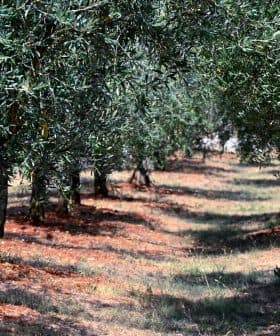Edible Oil Prices Expected to Keep Increasing, Olive Oil Levels Remain Steady
Edible oil prices, driven by high soybean oil prices, are expected to remain high for the next two years due to a lack of production in North and South America and high demand, according to Paul Meyers of Foresight Commodity Services. The United Nations Food and Agriculture Organization predicts that edible oil prices will continue to rise in 2021 due to low supplies and high demand until they stabilize in 2022, with prices already more than double what they were one year ago.
Consumers of edible oils are likely to contend with two years of high prices before markets stabilize and return to what is considered normal levels, Paul Meyers, the vice president of commodity analysis at Foresight Commodity Services told a conference last month.
With the exception of corn oil in the United States, Meyers said that edible oil prices are currently more than double what they were one year ago.
According to the United Nations Food and Agriculture Organization, oilseed and vegetable oil prices have steadily increased for the past 13 months.
See Also:Olive Oil PricesThis is mostly driven by high soybean oil prices. A lack of production in North and South America combined with high demand means that prices will likely not return to normal for the next two years, Meyers added.
For this to take place, the U.S., Argentina and Brazil would need to produce more soybean oil or demand from some of the largest consumers, including the biodiesel sector, would need to decrease.
New supplies of soybean oil from Argentina and Brazil were poised to add pressure to soybean oil prices in 2021, but drought caused by the La Niña in South America resulted in lower yields.
Along with soybean oil prices, sunflower, palm and canola oil prices have also remained high as production of both crops decreased in the 2020/21 crop year.
The supply of sunflower oil continued to tighten through the first half of 2021 as a result of poor harvests due to drought in Russia, Ukraine, Romania, Moldova and Bulgaria. Ukraine and Russia combine to produce about 80 percent of total global sunflower production.
Unfavorable weather conditions in Canada and the European Union are predicted to hurt the production of canola oil in the upcoming 2021/22 crop year, which has combined with steady demand to create what the FAO called “continued global supply tightness.”
Meanwhile, in Malaysia, Covid-19 pandemic-related lockdowns have prevented foreign laborers from returning to the plantations resulting in low production of palm oil. Foreign workers make up about 70 percent of the sector’s workforce.
This supply dynamic resulted in high oil prices in the first half of 2021. The Covid rebound also has helped drive up prices as the economies get back on track and countries reopen following the pandemic.
As more countries loosen Covid-19 restrictions due to the success of vaccination programs, the restaurant, hotel and catering industries are also likely to have a bullish effect on edible oil prices.
According to the World Bank forecasts, edible oil prices will continue to rise in 2021 due to low supplies and high demand until 2022 when they are expected to stabilize.
The financial organization revised its April 2021 Oils and Meals Index by 30 percent from its October outlook after it was apparent that the stocks and production of major edible oils did not grow as expected.
Meanwhile, International Olive Council data show that olive oil prices have remained steady over the past month in the three benchmark markets of Jaén, Bari and Chania, but have increased substantially compared with the same period last year and in 2019.
A combination of lower-than-expected global production in the 2020/21 crop year, paired with growing imports and increasing global consumption had pushed prices up for 16 consecutive months from January 2020 to May 2021.









